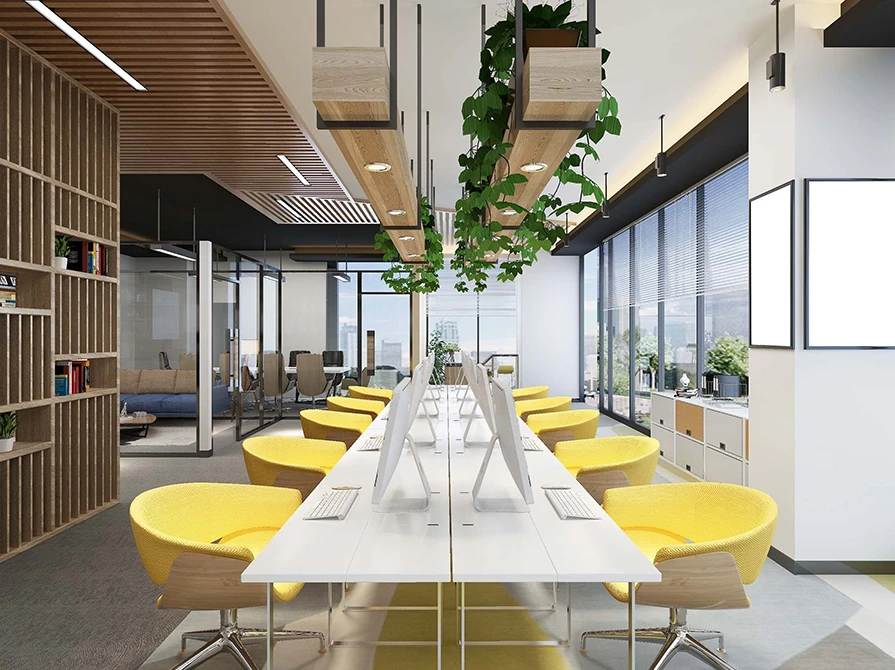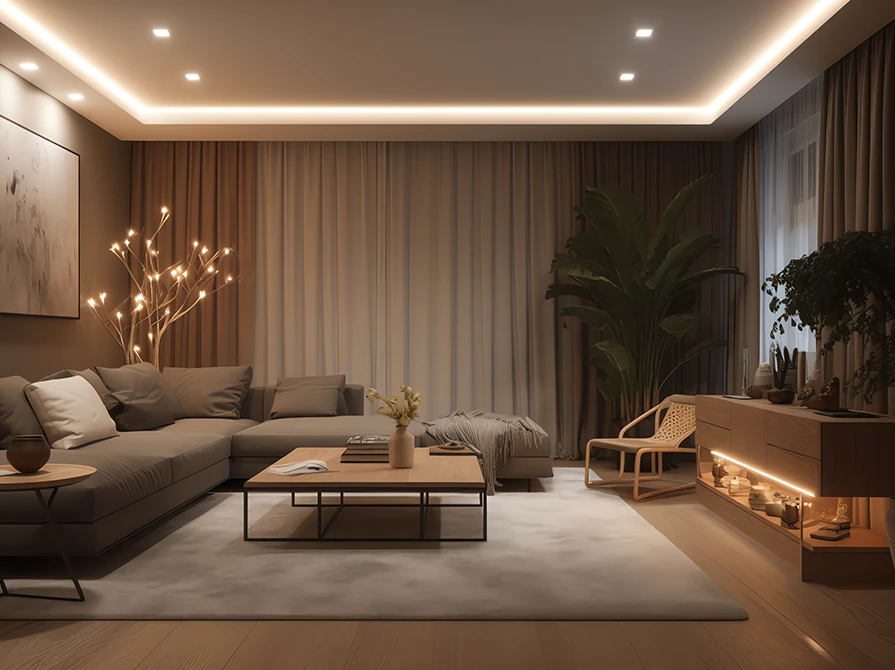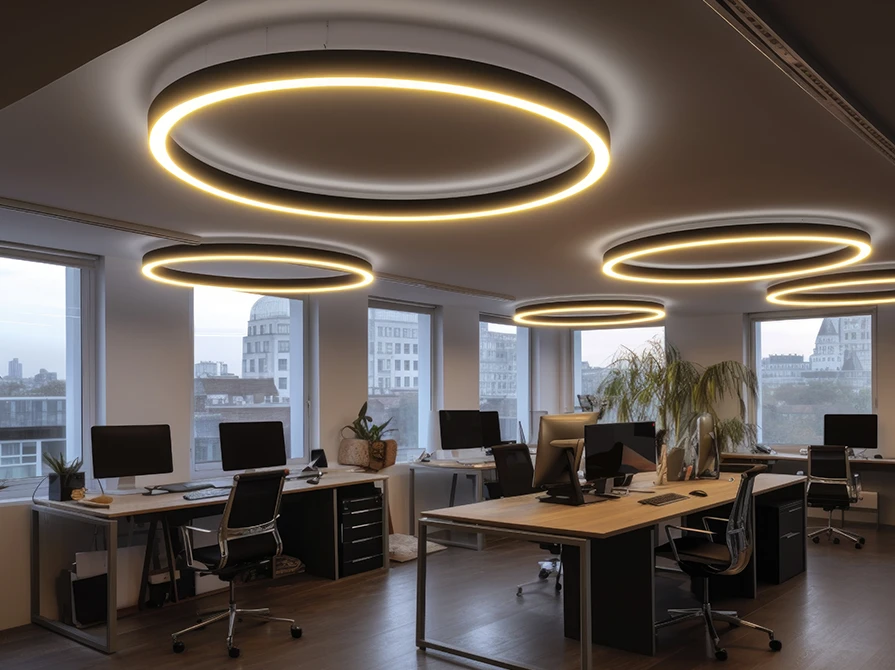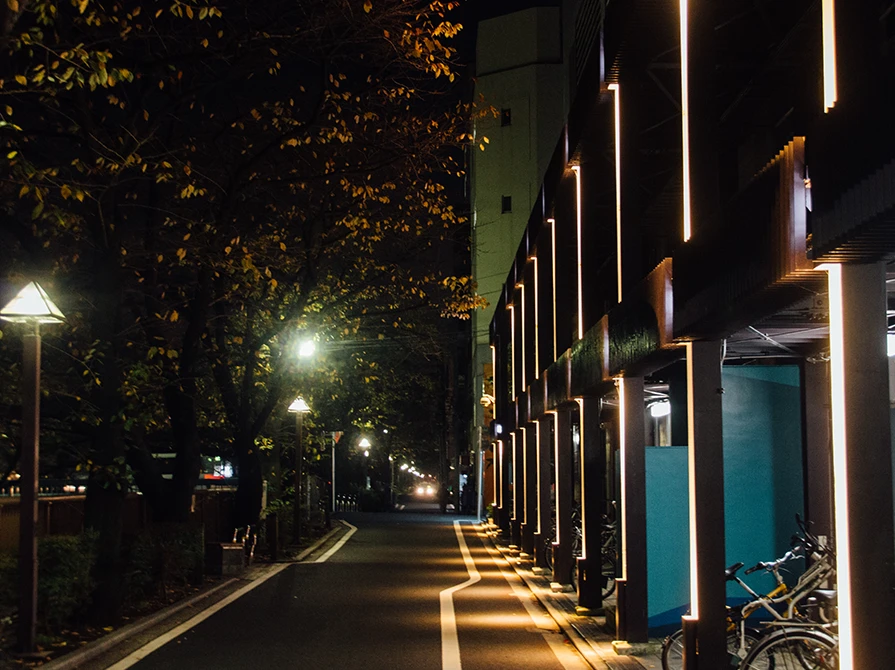


Today, the importance of a well-designed workspace cannot be overstated. One of the most crucial aspects of this design is lighting. Effective lighting goes beyond mere illumination; it plays a pivotal role in creating healthy, productive, and comfortable workspaces. This blog delves into the various ways lighting influences modern workplaces, emphasizing its impact on health, well-being, and productivity.
Circadian rhythms are the natural, internal processes that regulate the sleep-wake cycle and repeat roughly every 24 hours. These rhythms are influenced by environmental cues, the most significant of which is light. Natural light is essential for maintaining these rhythms, as it helps regulate the production of melatonin, the hormone responsible for sleep.
Glare is a common problem in many workplaces, caused by either direct light sources or reflections from surfaces. It can lead to eye strain, headaches, and decreased visual comfort, ultimately affecting productivity. To mitigate glare, it’s essential to use appropriate lighting fixtures and placement.
The color temperature of light, measured in Kelvins (K), affects how we perceive our environment and perform tasks. Warmer light (lower Kelvin values) creates a relaxed and cozy atmosphere, while cooler light (higher Kelvin values) enhances alertness and concentration.
Task lighting provides localized light specifically for work activities, such as reading, writing, or computer work. Unlike general lighting, which illuminates the entire room, task lighting focuses on a particular area, reducing eye strain and improving precision.
Effective task lighting can boost productivity by ensuring that employees have sufficient light for detailed tasks without causing glare. Desk lamps, under-cabinet lights, and adjustable floor lamps are common examples of task lighting that can be tailored to individual needs.
Human-centric lighting (HCL) is an approach that considers the impact of lighting on human health, well-being, and performance. HCL systems dynamically adjust the intensity and color temperature of light to mimic natural light patterns, supporting circadian rhythms and enhancing cognitive function.
Incorporating HCL in the workplace can lead to significant improvements in employee productivity and well-being. By aligning artificial lighting with natural light cycles, HCL helps maintain energy levels and focus throughout the day. It also creates a more pleasant and stimulating work environment, reducing stress and fatigue.
Creating a healthy workplace environment goes beyond ergonomic furniture and good air quality. Lighting plays a crucial role in ensuring the well-being of employees. Here are some strategies for using lighting to promote health in the workplace:
Natural light is the most beneficial form of lighting for human health. It regulates circadian rhythms, improves mood, and enhances productivity. To maximize natural light exposure:
Dynamic lighting systems, also known as tunable white lighting, adjust the color temperature and intensity of artificial light throughout the day to mimic natural light patterns. This supports circadian rhythms and reduces fatigue:
Glare and reflections from lighting can cause significant discomfort and eye strain, leading to decreased productivity:
Smart lighting controls allow for precise management of lighting conditions, enhancing both comfort and efficiency:
Regular maintenance and timely upgrades of lighting systems are essential for ensuring a healthy and efficient work environment:
Effective lighting is a cornerstone of a healthy and productive workplace. By understanding and implementing strategies that maximize natural light, utilize dynamic and full-spectrum lighting, reduce glare, and integrate smart controls, businesses can create environments that support the well-being and efficiency of their employees. As technology advances and our understanding of the impact of lighting on health deepens, the focus on creating healthy lighting environments will continue to grow, ultimately leading to more satisfied and productive workforces. Contact us to know how our lighting solutions can help you create a healthy workspace for your employees.







